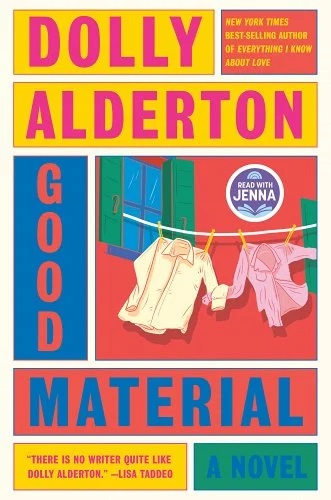[ad_1]
Dolly Alderton’s central narrative preoccupation across all her books has remained the same: depicting the tumult of seeking romantic love in one’s twenties and thirties, with all the attendant anxieties of false promises and disillusioned hopes. In Alderton’s first novel, Ghosts, a thirtysomething food writer, Nina, embarks on a fling that seems to promise a long-term romantic horizon; when this does not happen, Nina is forced to negotiate the stress-inducing familial, platonic, and professional realms of her life that she had ignored for far too long. In her nonfiction books—which include her memoir, Everything I Know About Love, and a collection from her advice column, Dear Dolly: Collected Wisdom—Alderton also considers an eerie feeling: that creeping sense that one is falling into a trap of normative, heteropatriarchal, suburban living in an increasingly alienated world. These existential qualms are necessarily gendered: What does it mean for a woman to live a good life? How does one do so inside the ever-shifting context of a romantic relationship? Why is a woman’s sense of self tethered to her relationship status?
Dolly Alderton’s highly anticipated second novel, Good Material, considers the scenes of romantic love and heartbreak from the cis male point of view, marking a departure into different albeit familiar narrative terrain. In Good Material, our central protagonist is Andy Dawson, a financially precarious stand-up comedian in his early thirties, who has just been dumped by his girlfriend of four years, Jen, after a trip to Paris. The novel is told in the first-person present tense from the summer of 2019 to the winter of 2020, right before the start of COVID-19 lockdowns. Each chapter is marked by a specific date, which gives the novel a diaristic texture. Andy Dawson is a failing comedian and now newly single finds himself sinking into depths of despair and obsession. His friends say he’s in the “madness” stage of grief. Everything reminds him of Jen. His first and final thoughts of the day are of her. He cannot manage to have a conversation without bringing her up or slyly inquiring about her well-being. In this way, the novel is heavily scene-driven, with splashy dialogue that operates on a wryly comic British sensibility.
Andy stumbles, scene through scene, and for about two-thirds of the novel, we, readers, always arrive at a singularity—a limit—no matter the number of brief side plots and quests: a return to Jen. As such, Andy Dawson grows tedious as a character, which makes the experience of reading Good Material itself become tedious. Andy is obsessive about his heartbreak but this interior whirlpool has the effect of making the narrative itself descend into the same spiral, which flattens Andy as a character. His relationship to his professional life is stalled as a site for narrative potential, even though the novel works up to his comedy show as its climax. And while the novel is written in the first person, confessional voice, there is a stunning lack of vulnerability in the prose. We are refused new insights and depth. Instead, we read countless generalities, aphorisms, dictums, and seemingly obvious observations about romantic separation, when what we crave is psychological specificity.
Despite this, there is a sense that Good Material is both a dramatization and indictment of a particular kind of cis hetero-masculinity, which in the context of this novel involves men who are unable to manage their emotions without a partner and are unable to attend to the needs of their partner while they are with them. Andy is mopey and emotionally unintelligent, though he believes himself otherwise, following all the classic moves that most men do when they’ve just been broken up with: contacting old flames, believing that these old flames must still be in love with them, not sitting with their feelings or rather sitting with their feelings with a few shots of vodka. These are the pitfalls of asymmetrical emotional labor, which are really the occupational hazards of patriarchy.
Nevertheless, the novel shines when secondary characters take up space. Consider, for instance: the moment when Andy has sex for the first time with a young woman post-breakup, and Alderton captures his trepidation and desire with acute, even hyper-aware, detail. Or consider when Morris, the neurotic elderly man with whom Andy lives for a while, offers a nihilistic philosophy on romance and partnership. These are moments when the novel shines with brilliance because we are given glimmers of other interiorities or experiences that compel Andy to rethink how he orients himself in the world. If only the secondary characters of Good Material were given the space to exert more pressure on our central protagonist—that would have made for a more complicated portrait of this particular romantic grief.
By the end, though, Good Material is redeemed by a switch in point of view, in which we get Jen’s perspective on the breakup. Though this shift occurs towards the very end of the novel and is thus rather abridged, the insights that Jen imparts offer a rich perspective on why she broke up with Andy, in such a way that confirms Andy’s myopia but without contempt; her perspective is steeped in compassion and anguish. With Jen’s point of view, the heartbreak actually becomes felt. The inability for a couple to reconcile certain crucial disconnections becomes poignant. The last sentence is like a soft whisper that lingers, confirming Dolly Alderton as an important voice in the genre of capturing early-thirties romance and heartbreak.

FICTION
Good Material
By Dolly Alderton
Knopf Publishing Group
Published January 30, 2024

[ad_2]
Source link

